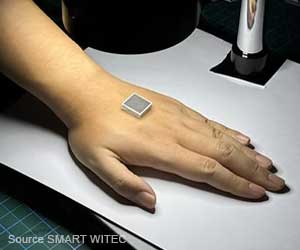The brain-controlled exoskeleton integrates brain monitoring into a robotic exoskeleton to allow people with severe disability to move on their own.

In the experimental setup, there's an array of lights that strobe at different frequencies. The user simply focuses on one of the lights, each of which is linked to a specific motion such as ‘turn right'. The electroencephalography system recognizes the same frequency within the generated brain signals.
The individual components of the system are nothing new, but integrating them into a working prototype was a serious challenge because the exoskeleton creates lots of electrical noises that washes out the EEG signal.
The scientist team developed a special algorithm to recognize the signals being searched for, generating an accuracy of activation by healthy subjects of about 91% with a response time averaging three seconds.
Source-Medindia
 MEDINDIA
MEDINDIA




 Email
Email






